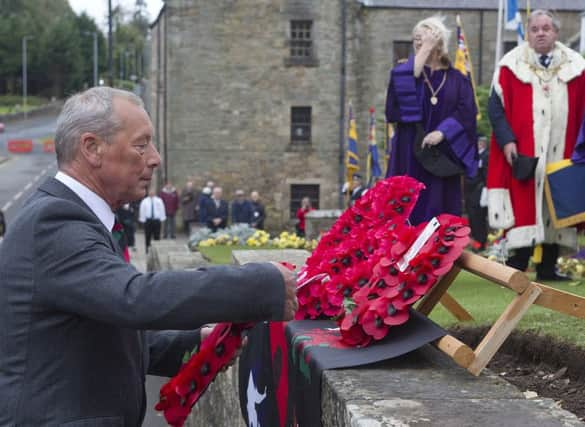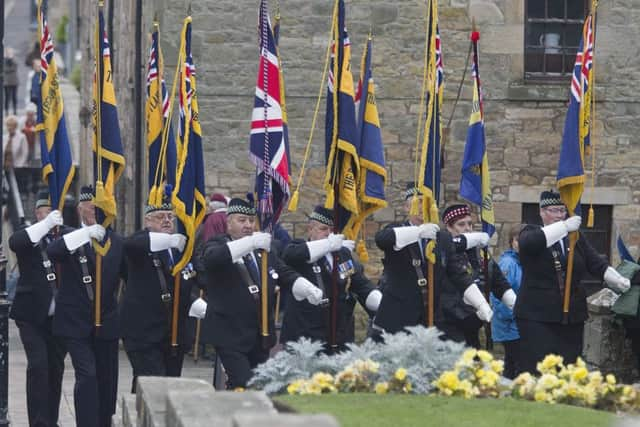Memorial stone unveiled in Jedburgh to commemorate battlefield hero John Daykins


Sergeant John Daykins was awarded the military decoration for his actions at Solesmes, near Cambrai in France, on October 20, 1918, when his hand-to-hand fighting under enemy fire helped him capture 25 prisoners and an enemy machine gun.
The commemorative stone was unveiled at Jedburgh’s war memorial in Abbey Place on Saturday, with descendants of Daykins, traced after an appeal by the town’s Royal British Legion Scotland branch, in attendance.


Advertisement
Hide AdAdvertisement
Hide AdOther guests included Major Pat Ralph of the Yorkshire Regiment Association, Colonel Geoffrey Norton of the York and Lancaster Regimental Association and serving soldiers from the Scottish and North Irish Yeomanry, formerly the Lothian and Borders Horse regiment.
Led by Legion Scotland standard bearers, a parade made its way to Abbey Place, where the Rev Andrew Cooper led a service with Borders author and Royal Edinburgh Military Tattoo narrator Alasdair Hutton.
Shaun Carroll, chairman of Jedburgh’s Royal British Legion Scotland branch, which organised the event, said he couldn’t have asked for any more.
“It was beautiful. I was chuffed to bits with it,” he said. “I couldn’t have asked for more support from the townsfolk, and we had some lovely support from Edinburgh and Lothians through the legion too. It was really nice.”
Advertisement
Hide AdAdvertisement
Hide AdAfter launching an appeal to find Daykins’ descendants earlier this year, Mr Carroll was introduced to genealogist Melvyn Park, who traced second cousin twice removed Gillian Bosner, of Leicester.
“She came with her son, and there was another family member that came from Glasgow,” he said.
“I showed them photographs of May 31, 1919, when John Daykins was given the freedom of the burgh. The historical society had given us a copy of the Jedburgh Gazette, and we presented them with a copy of the inscription from the burgess book.
“They said they hadn’t known what to expect, but they were really moved by the reception they got from Jedburgh.”
Advertisement
Hide AdAdvertisement
Hide AdThe eldest son of John and Bessie, John Brunton Daykins was born at Ormiston Farm, on the road from Hawick to Bonchester Bridge, on March, 28, 1883.
The family moved to Howden, near Jedburgh, when John was five and he worked on the farm there before enlisting with the Lothians and Border Horsemen when war broke out.
He served in France, Greece and Belgium, before being struck down with trench fever and discharged after the Somme in September 1916, later re-enlisting with the York and Lancaster Regiment.
At Solosmes, he took 25 prisoners and a machine-gun post single-handedly, for which he was later awarded the Victoria Cross. He was also awarded the Military Medal in November 1918.
Advertisement
Hide AdAdvertisement
Hide AdDaykins died in January 1933 after a shotgun accident at his farm and is buried in Castlewood Cemetery.
Describing his heroics at Solosmes, Major General Robert Whigham wrote in December 1918 that the sergeant had “displayed the greatest dash, initiative and gallantry”.
“In spite of heavy machine gun fire, he worked his way to the post alone, and shortly afterwards returned, driving 25 of the enemy in front of him and carrying a captured machine gun,” the major general wrote.
“This action undoubtedly saved many casualties.”
The commemorative stone is one of 469 laid throughout the UK as part of the Government’s First World War centenary campaign,